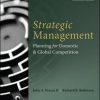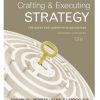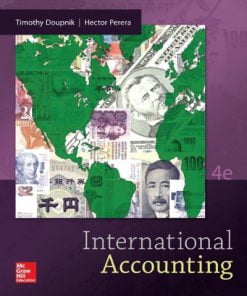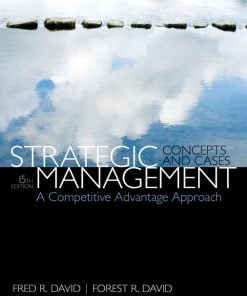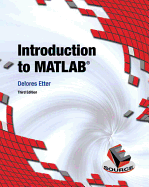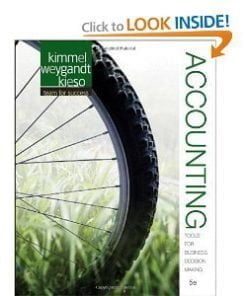Contemporary Auditing Knapp 9th Edition Solutions Manual
$35.00 Original price was: $35.00.$26.50Current price is: $26.50.
Contemporary Auditing Knapp 9th Edition Solutions Manual
This is completed downloadable of Contemporary Auditing Knapp 9th Edition Solutions Manual
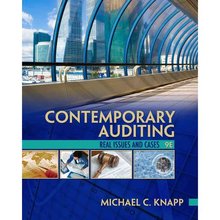
Product Details:
- ISBN-10 : 113383955X
- ISBN-13 : 978-1133839552
- Author: Michael Knapp
Knapp’s CONTEMPORARY AUDITING: REAL ISSUES AND CASES, Ninth Edition, uses real-world cases to acquaint you with the work environment of auditors. It also helps you to recognize the red flags that often accompany problem audits. This new edition offers exciting new cases that cover Lehman Brothers Holdings Inc., First Keystone Bank, Foamex International Inc., Phillips Petroleum Company, and Freescale Semiconductor Inc. Five new cases have also been added to the “Audits of High-Risk Accounts” section, examining well-known companies such as General Motors, Lipper Holdings, LLC, Geo Securities, Inc., Belot Enterprises, and Regina Company, Inc. The ninth edition fully integrates risk assessment standards recently adopted by the auditing community. What better training for the real world of auditing than to learn by studying real companies and situations!
Table of Content:
Chapter 1
There were many parties who had responsibility in the Enron fraud:
• Enron Management: Played a significant role not only for orchestrating the fraud, but also in having an active role in trying to influence the auditors, and their independence.
• Arthur Andersen’s Senior Management: The accounting firm did not appear to have sufficient checks and balances on the work and potential conflicts of its outside offices. In addition, when several senior partners raised potential concerns about Enron, Andersen’s senior management had a responsibility to investigate these concerns (in essence audit the work of its own auditors), as well as to raise its concerns with Enron’s Board of Directors and its audit committee.
• Local Arthur Anderson Auditors: While the vast majority of the local office may have been delegated at times to the Enron account (from an audit and/or consulting role), local members of Andersen’s team had a duty to raise concerns not only with Enron’s audit committee, and board of directors, but also with senior management at Arthur Andersen (outside their local office). Their lack of effort to maintain independence creates concerns about the profession as a whole.
• Regulators: Regulators could have taken a larger role in limiting management’s ability to influence the auditing process.
• Investment Bankers/Bankers: Just as in the recent financial crisis, those who underwrote and/or traded Enron securities had a responsibility to their clients to conduct additional due diligence on any securities they underwrote particularly as Enron sought to do more exotic securities and partnerships.
• Academics/Accounting Industry Trade Groups: This group might have played a larger role in preparing auditors to deal with such situations and provide a way to help bring potential issues to the light. The trade groups might also have played a larger role in understanding how the special purpose entities could be used and abused in a proactive (rather than retroactive) way.
People Also Search:
contemporary auditing real issues and cases
contemporary auditing knapp pdf
contemporary auditing knapp 9th edition
Related products
Solution Manual
Solution Manual
International Accounting Doupnik 4th Edition Solutions Manual
Solution Manual
Management Information Systems Managing the Digital Firm Laudon 14th Edition Solutions Manual
Solution Manual
Solution Manual
Solution Manual for Introduction to Electrodynamics, 4/E 4th
Solution Manual
Solution manual for Accounting: Tools for Business Decision Making Kimmel Weygandt Kieso 5th Edition


